Kiszone rzodkiewki z miodem - zdrowe i pyszne domowe przetwory. Szybkie i proste kiszonki
Jakie są korzyści zdrowotne kiszonych rzodkiewek?
Fermentacja to nie tylko smak, ale także wartości odżywcze i korzyści dla zdrowia! Żywność fermentowana jest bogatym źródłem naturalnych antybiotyków, które możemy spożywać codziennie bez recepty. Proces fermentacji, oparty na żywych kulturach bakterii, sprawia, że składniki mineralne zawarte w kiszonych produktach są lepiej przyswajalne przez nasz organizm. Dodatkowo, produkty fermentowane mają długą trwałość, zachowując swoją świeżość i jakość przez długi czas.
Jak zgłębić tajniki sztuki fermentacji?
Jeśli chcesz zgłębić tajniki sztuki fermentacji i odkryć niesamowite możliwości, warto sięgnąć po książkę Dzika fermentacja autorstwa Sandora-Ellixa Katza. Ta fascynująca publikacja przeniesie Cię w świat fermentacji, pełen pasji i miłości do tego rzemiosła. Od podstawowych zasad i technik po zaawansowane przepisy, znajdziesz w niej cenne wskazówki i inspiracje. Niezależnie od tego, czy jesteś doświadczonym fermentowaniem czy dopiero zaczynasz swoją przygodę, ta książka będzie doskonałym przewodnikiem w twojej kulinarnej podróży.
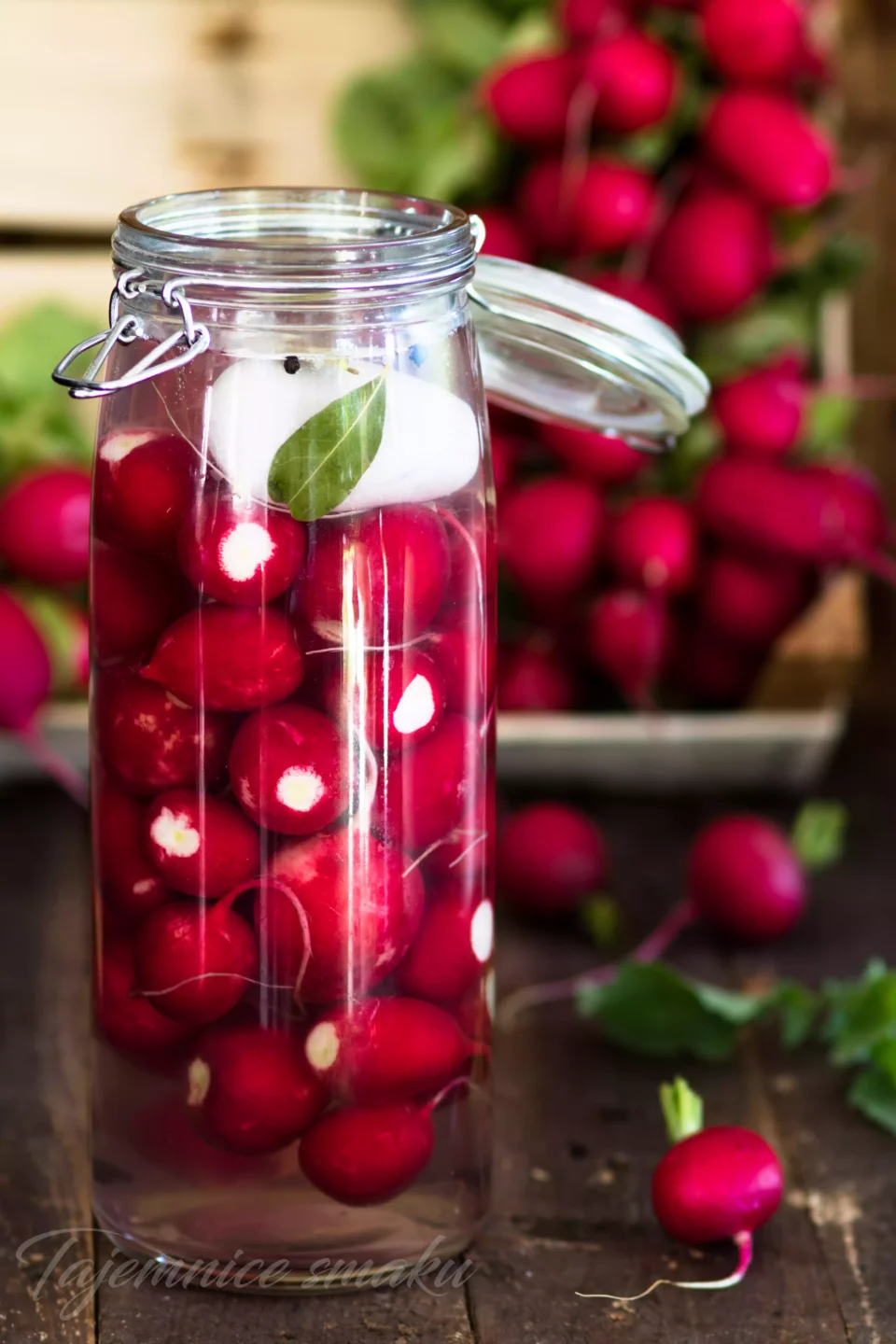
SKŁADNIKI - słoik o pojemności ok 1,5 l
WYKONANIE
- Zagotowuj wodę i rozpuść w niej sól, odczekaj, aż ostygnie do temperatury około 30°C.
- Następnie dodaj łyżkę miodu do przygotowanego roztworu i dokładnie mieszamy, aż miód się rozpuści.
- Rzodkiewki umyj, usuń liście (możesz zrobić z nich pesto) i ułóż je w słoiku lub glinianym naczyniu.
- Dodaj ziarna pieprzu i listki laurowe do rzodkiewek w słoiku.
- Zalej rzodkiewki przygotowanym roztworem, tak aby były całkowicie pokryte.
- Opcjonalnie może dodać łyżkę soku spod kiszonych ogórków, aby przyspieszyć fermentację.
- Obciąż zawartość słoika, na przykład wyparzonym kamieniem, i szczelnie go zamykamy.
- W miarę potrzeby otwieraj słoik, aby uwolnić nagromadzone gazy podczas fermentacji.
- Jeśli obawiasz się wycieku zalewy, możesz ustawić słoik w misce lub innym naczyniu.
- Czas fermentacji wynosi około 5 - 7 dni, choć możesz kontynuować fermentację nawet do 3 tygodni, zależy to od preferencji smakowych i temperatury otoczenia.
- Co kilka dni warto próbować rzodkiewki, a gdy smak będzie dla nas idealny, przenosimy słoik do lodówki.
PORADY I WSKAZÓWKI - FAQ
Jak ukisić rzodkiewki?
Kiszone rzodkiewki to szybki i prosty sposób na ciekawy dodatek do kanapek, sałatek lub dań obiadowych. Wystarczy kilka podstawowych składników: rzodkiewki, woda, sól, opcjonalnie miód i przyprawy. Miód dodaje delikatnej słodyczy i wspomaga fermentację, tworząc łagodniejszy smak niż w przypadku tradycyjnych kiszonek. Taka wersja idealnie sprawdzi się dla osób, które dopiero zaczynają swoją przygodę z domową fermentacją.
Czy można kisić rzodkiewki bez miodu?
Tak, miód w przepisie jest opcjonalny. Jeśli wolisz bardziej klasyczny, wytrawny smak, po prostu go pomiń. W wersji bez miodu fermentacja przebiega równie dobrze, możesz dodać odrobinę soku spod kiszonych ogórków, aby ją przyspieszyć. To świetne rozwiązanie, jeśli chcesz uzyskać ostrzejszy smak i bardziej zdecydowany aromat.
Jak długo kisić rzodkiewki?
Czas fermentacji zależy od temperatury otoczenia i preferencji smakowych, zazwyczaj trwa od 5 do 7 dni. W cieplejszych warunkach fermentacja postępuje szybciej. Warto próbować rzodkiewki co 2 - 3 dni i przenieść je do lodówki, gdy osiągną idealny smak.
Jakie przyprawy dodać do kiszonych rzodkiewek?
W tej kiszonce podstawą są liść laurowy i ziarna pieprzu, ale możesz także dodać ząbek czosnku, plasterki imbiru, liść chrzanu, koper, gorczycę albo chili. Dzięki temu każda partia może smakować inaczej, warto eksperymentować i zapisywać swoje ulubione kombinacje.
Dlaczego warto kisić rzodkiewki?
Kiszenie rzodkiewek to nie tylko sposób na ich przedłużenie świeżości, to także świetna metoda na wzbogacenie diety w naturalne probiotyki. Fermentowane warzywa wspierają pracę jelit, poprawiają trawienie i odporność. A do tego smakują naprawdę wyjątkowo, są lekko pikantne, kwaśne i chrupiące.
Co zrobić, jeśli zalewa wypływa ze słoika?
Podczas fermentacji mogą gromadzić się gazy, które wypychają zalewę ze słoika. Warto ustawić słoik na talerzyku lub w misce i co 1 - 2 dni delikatnie go otwierać, aby uwolnić nadmiar gazów. Ważne jest też, by warzywa cały czas były zanurzone w zalewie, możesz je docisnąć wyparzonym kamieniem lub ceramicznym talerzykiem.
Jak przechowywać kiszone rzodkiewki?
Gdy rzodkiewki osiągną pożądany smak, najlepiej przenieść je do lodówki, to spowolni fermentację i pozwoli cieszyć się ich smakiem przez kilka tygodni. Słoik warto oznaczyć datą ukiszenia, dzięki temu łatwiej kontrolować świeżość i czas przechowywania.
Inspiracja
Pomysł na dodanie miodu do kiszenia rzodkiewek zaczerpnęłam z książki Dominiki Wójciak - Jarzynovej - Prosto, pysznie, do pudełka
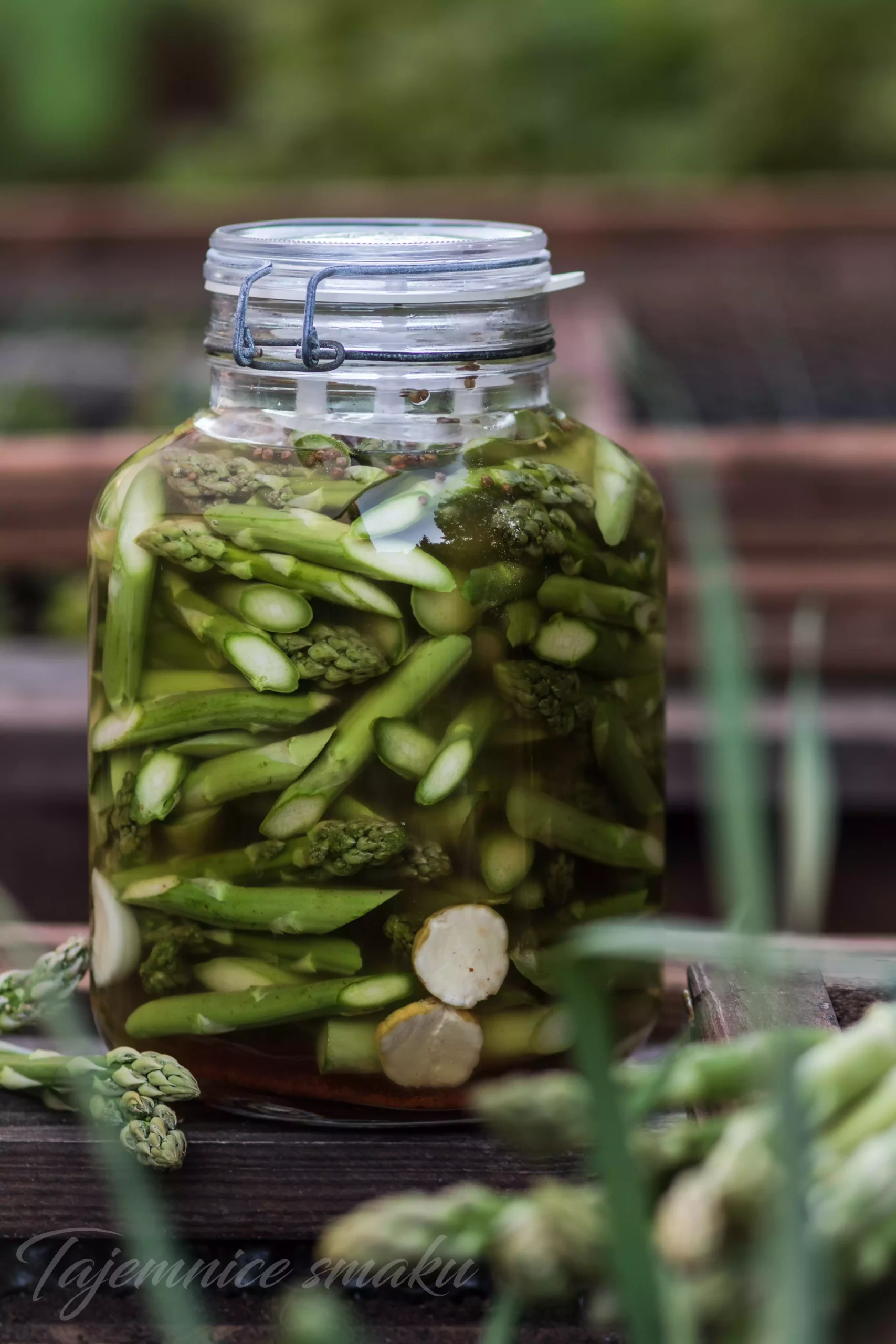
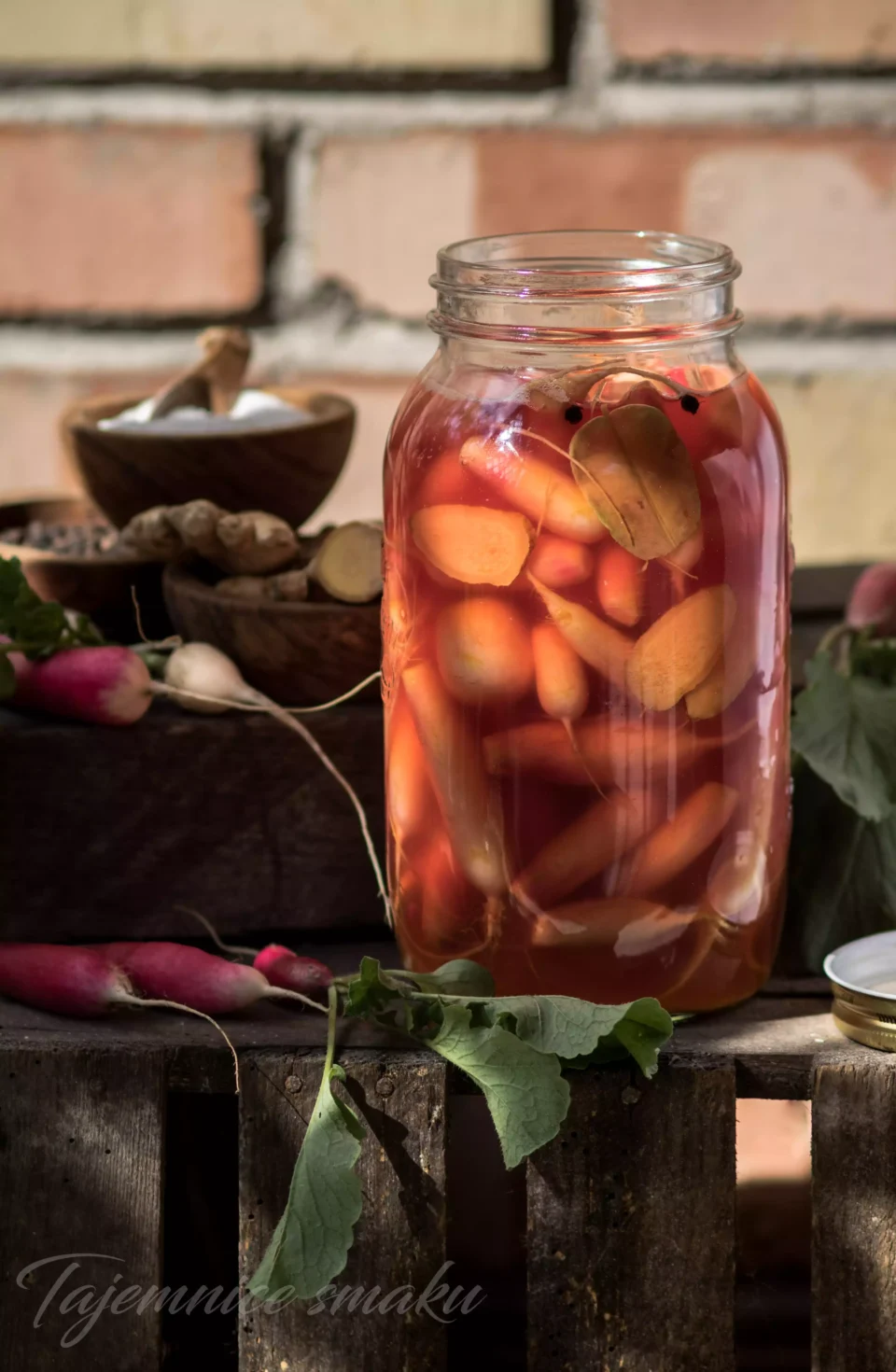
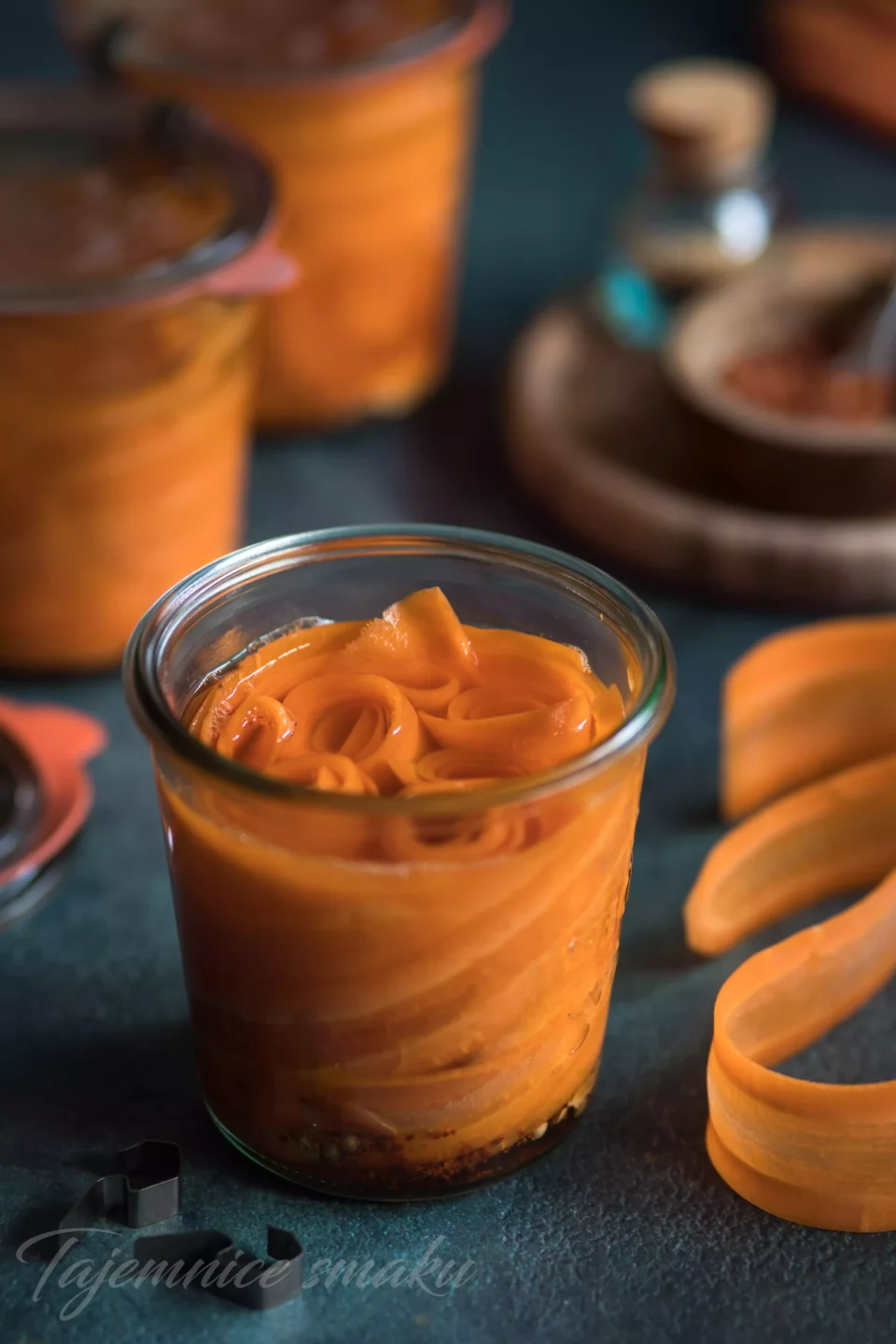
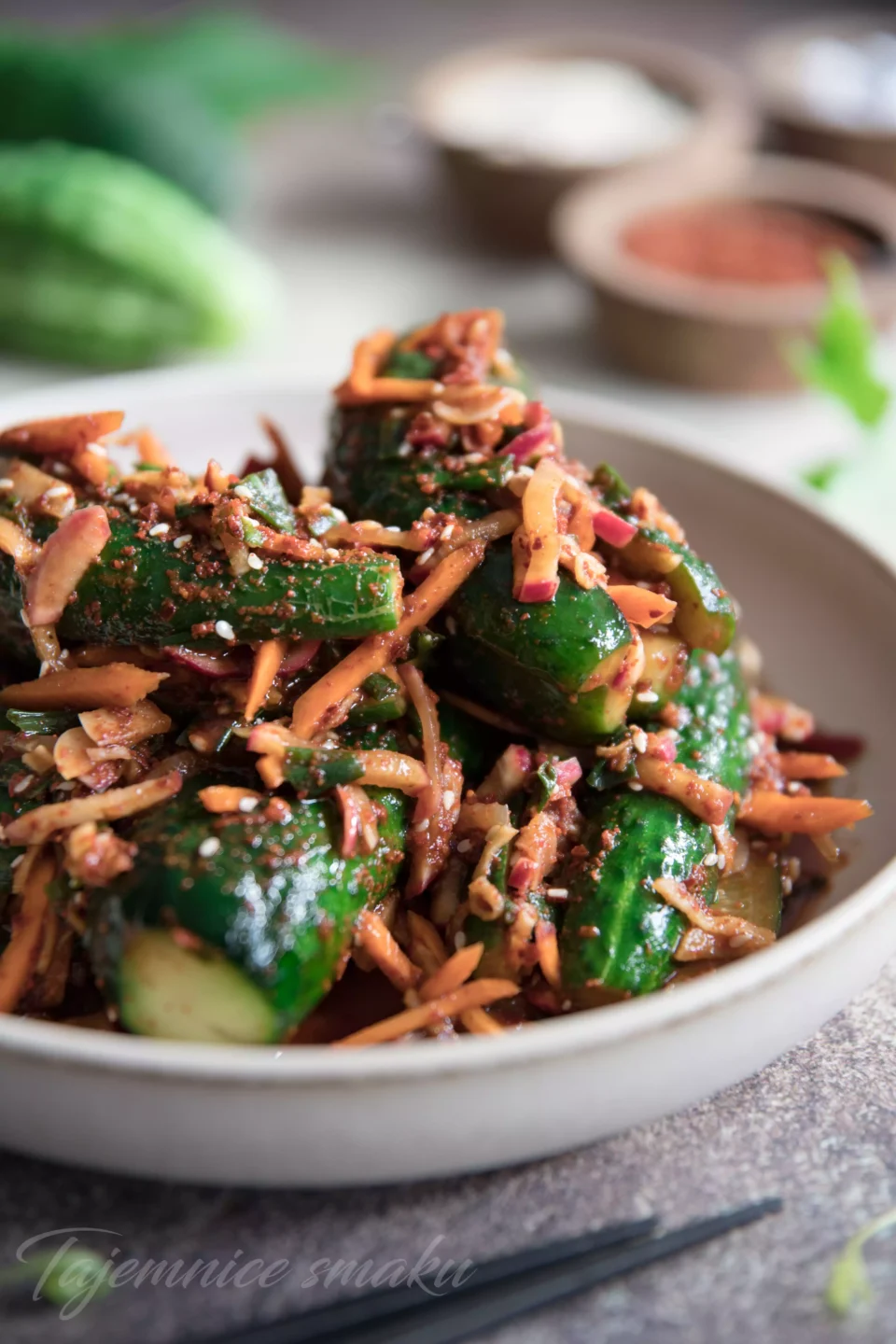

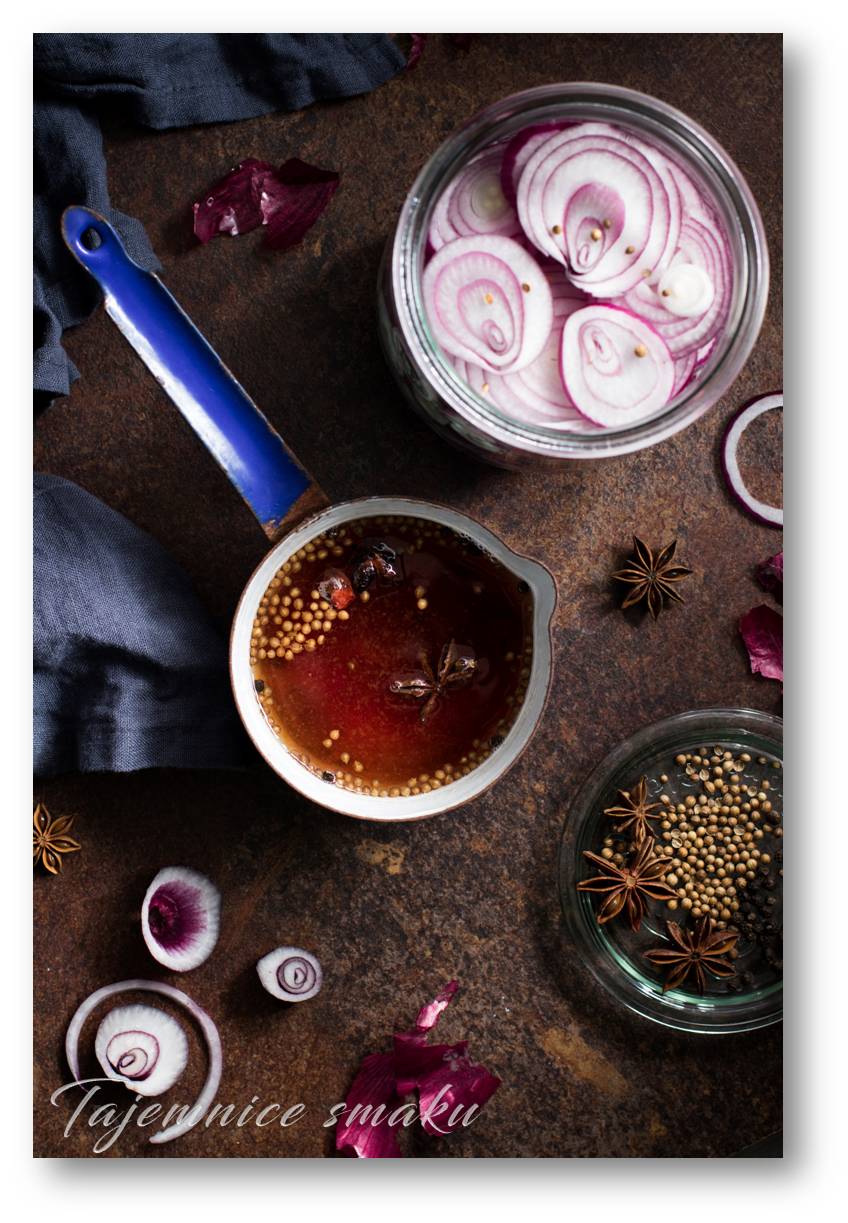
Magdalena Rosada 2019-06-12 16:28:13
Jestem wielką fanką kiszonek. Rzodkiewki kisiłam do tej pory z zestawem dodatków z ogórków kiszonych. Muszę koniecznie spróbować wersji z miodem! Czy 1 łyżka miodu wystarczy, żeby zmodyfikować smak?
Odpowiedz
TajemniceSmaku 2019-06-13 11:37:43
Trudno powiedzieć, nie próbowałam z większą ilością miodu.
Odpowiedz
Monia 2019-06-22 12:25:17
Przygotowałam rzodkiewki według tego przepisu i..... niestety kompletny niewypał. Mam wrażenie, że zalewa jednak była za "słaba" (za mało słona, za mało przyprawiona). Może jeszcze kiedyś spróbuję zrobić po prostu tak samo jak ogórki.
A co do miodu, wydaje mi się, że chyba bardziej pełni on tu rolę pożywki dla bakterii (kwasu mlekowego), niż modyfikuje smak.
Odpowiedz
TajemniceSmaku 2019-06-23 16:00:21
Trudno mi powiedzieć, co poszło nie tak? Według tej receptury często kiszę rzodkiewki (i z miodem, i bez) i przeważnie się udają... a może to wina rzodkiewek?
Odpowiedz
Dodaj komentarz
Twój adres e-mail nie zostanie opublikowany
Możesz się zalogować, aby automatycznie wypełnić dane.